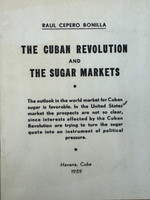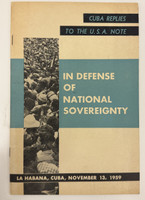- Travel
-
Exhibits
- Covers
- Immortal Cuba: Artists Take on Their Heroes
- Seattle Poster Exhibit
- Sandra Dooley & Alejandrina Cué
- The Art of Wayacón
- Cuban Folk Art
- Cuba In Black And White
- 25 Years of Cuban Art Space
- Summer Folk Art Expo
- ¡SPRING AWAKENING FROM CUBA!
- Celebrating The Art Of Cuban Women
- Celebrating Paper, Affordable Art from Cuba
- Art of the Revolution
- Outsider Art
- Lost and Found
- En la lucha: Celebrating Cuban Women and Their Art
- Cuban Art Stash
- 100 Fires: 5 Cienfuegos Artists' Work on Paper
- Waya + Monte! Magic Realism in Cienfuegos
- Viva Cuba Viva! Poster Show
- Cultivando Sueños
- Black Lives Matter in Cuba Jan 9-March 27
- Leandro Soto: Crónicas visuales
- Cuban Canvas
-
Archive
- Global Reflection 2018: Spirit and Community
- Exhibit in the cloud: Contemporary Works on Paper
- MADE IN CUBA! MINNEAPOLIS EXHIBIT
- Cuban Posters and Photography from CCS collection
- AUTUMN SALE! Sept/Oct 2017
- SPRING ARTS AND CRAFT SALE
- Vuelo Directo/Non Stop: Alberto & Alejandro Lescay
- The Many Faces of Fidel
- Somos
- Made in Cuba!
- The US empire in Cuban graphics
- Made in Cuba/Seattle exhibit
- Entre Nos
- Looking Back
- Cuban Art Space
- Membership/Donate
- About Us
- Cuba News
-
This Cuban demographic yearbook from 1970 features a striking modernist cover design with bold blue typography rendered in a heavily textured, almost woodblock-print aesthetic against cream paper, with selective red accents adding visual impact. The design reflects the revolutionary government's commitment to transparency and data-driven governance, transforming what could be a dry statistical report into a visually engaging document. The rough, textural quality of the lettering suggests hand-crafted production methods, possibly screen printing or lithography, characteristic of Cuban government publications during the economic constraints of the early revolutionary period.
The publication provides comprehensive demographic data for Cuba as of 1970, documenting the island's geographic situation between 19° and 24° north latitude and 74° and 85° west longitude, with a total territorial extension of 114,524 km² including all keys and islands of the archipelago. According to preliminary census figures from November 6-8, 1970, Cuba's population reached 8,553,395 inhabitants, with 51.1% male and 48.9% female distribution. The document reveals significant demographic patterns: 36.7% of the population was under 15 years old, 57.5% between 15 and 64 years, and 5.8% over 65, with 60.5% residing in urban zones and a national density of 77.1 inhabitants per km².
The yearbook includes detailed mortality statistics by age group, showing infant mortality rates and population distribution across Cuba's political divisions of 6 provinces and the autonomous region of Isla de Pinos (now Isla de la Juventud). For health administration purposes, the country was divided into 7 provinces, 46 regions, and 284 health areas. This publication exemplifies the revolutionary government's emphasis on scientific planning and social monitoring, providing essential data for healthcare, education, and economic development policies during Cuba's socialist transformation. The inclusion of detailed climate data (temperatures averaging 28.5-31°C annually, rainfall between 1200-1500mm in eastern regions and 1000mm in western areas) demonstrates the comprehensive approach to national planning that characterized Cuban governance in the early 1970s.
-







